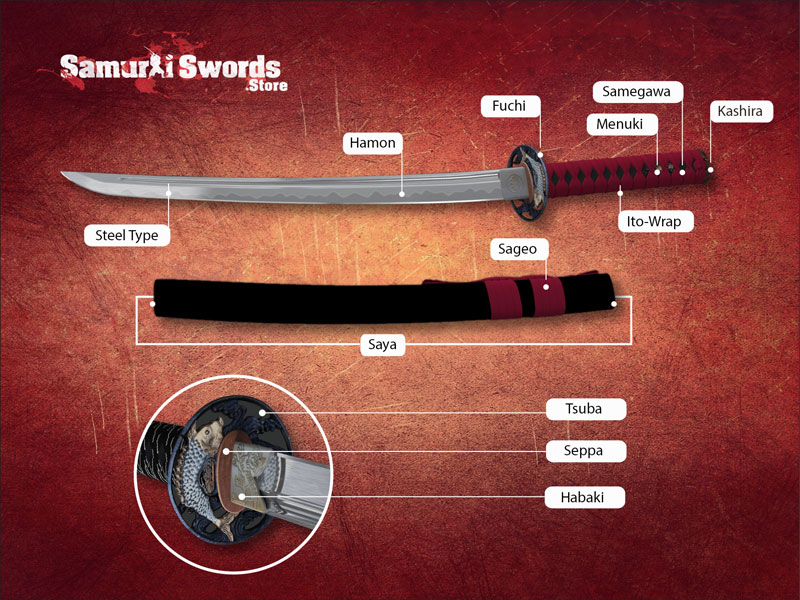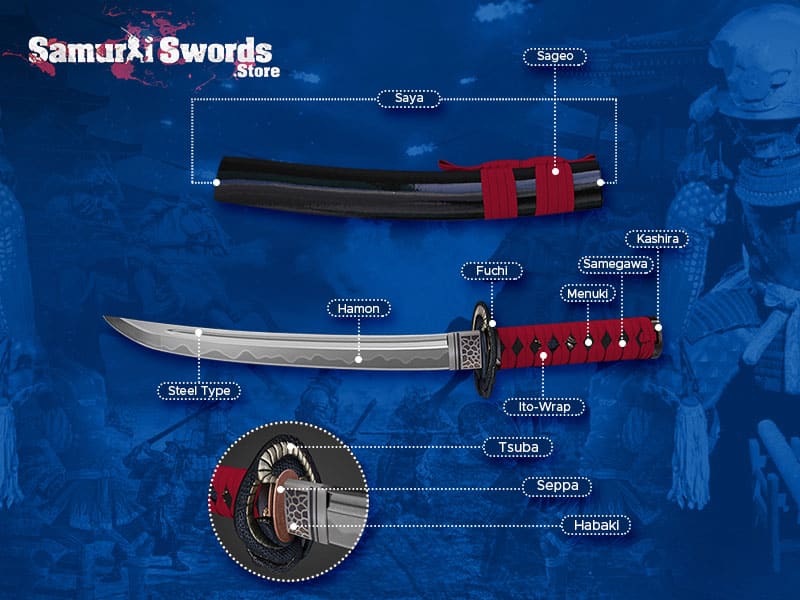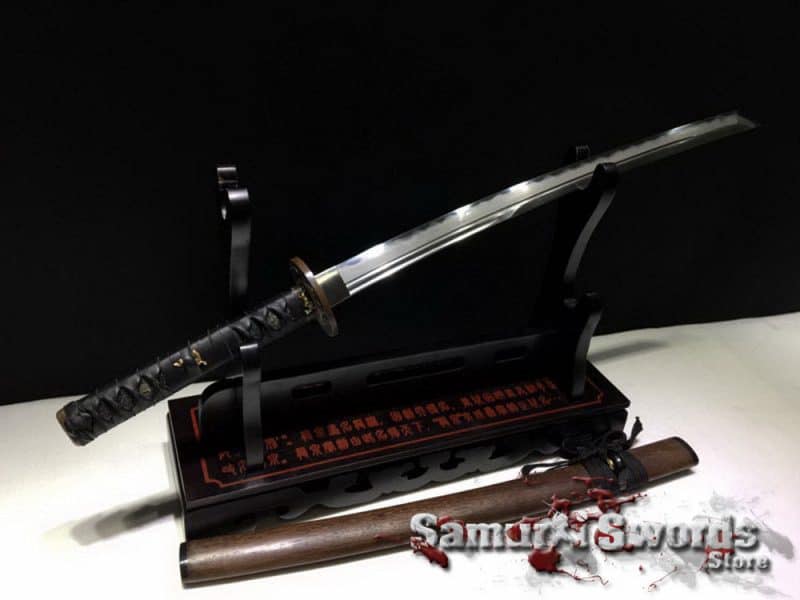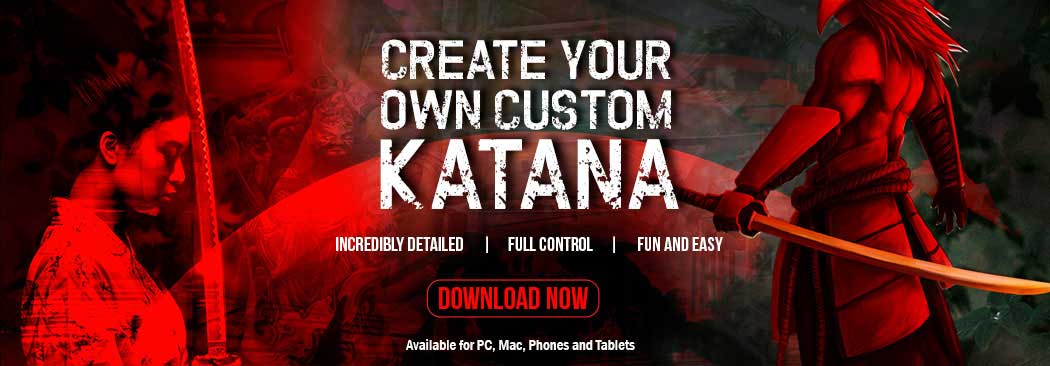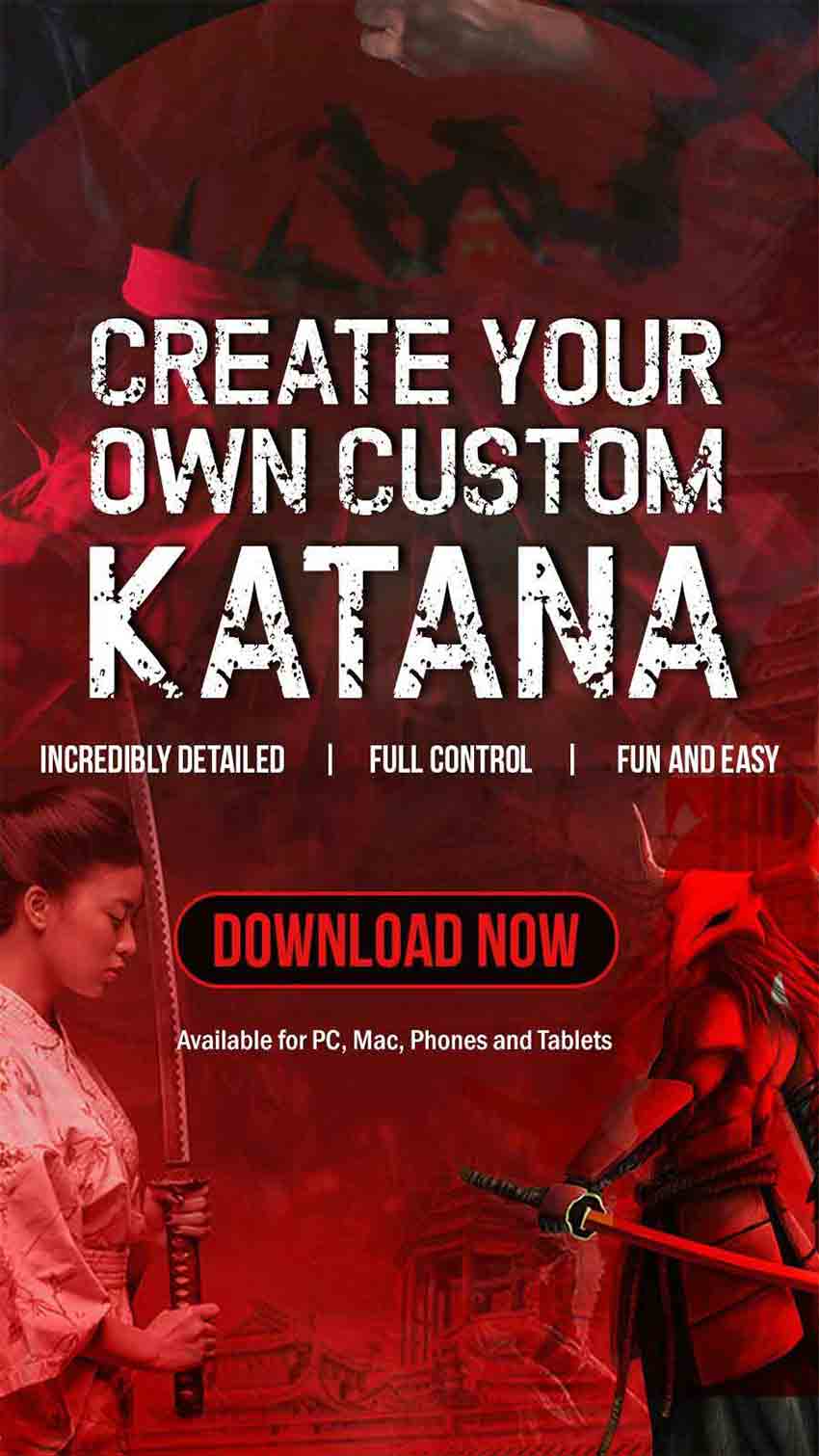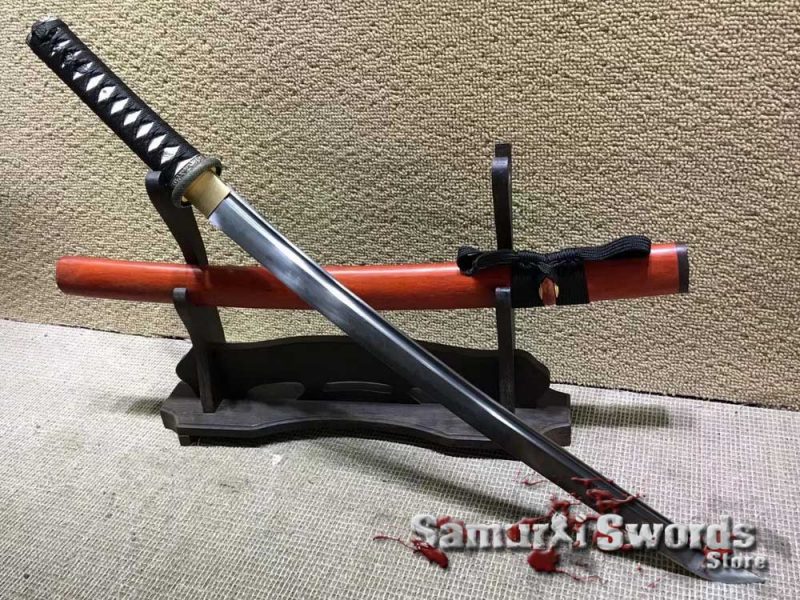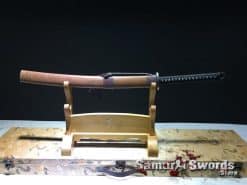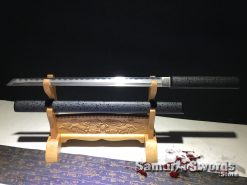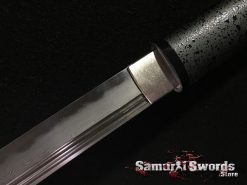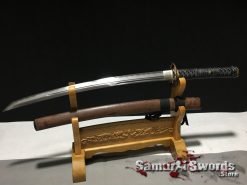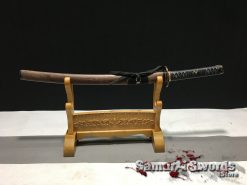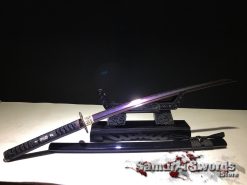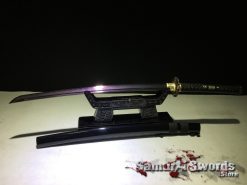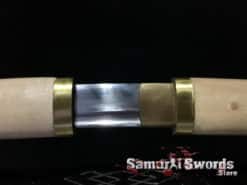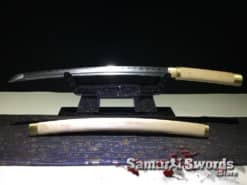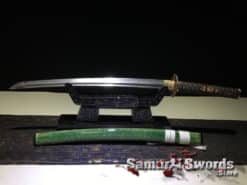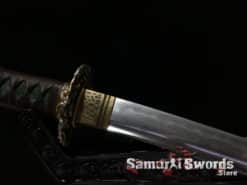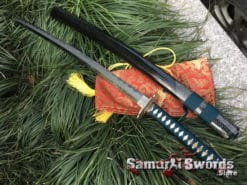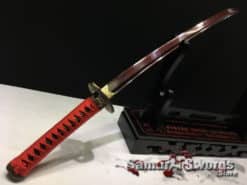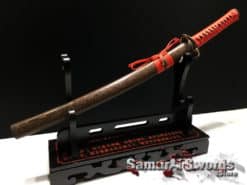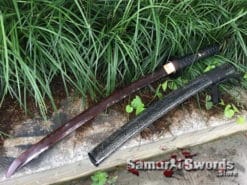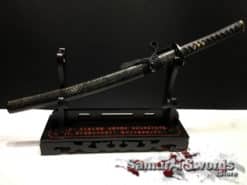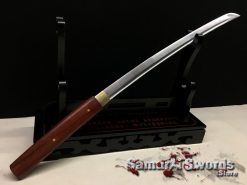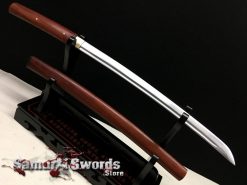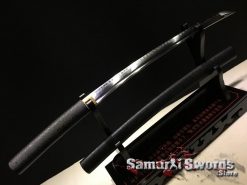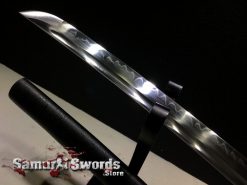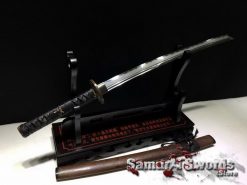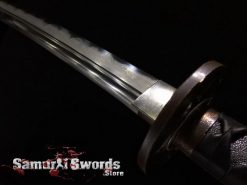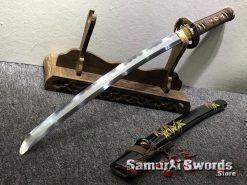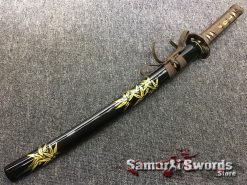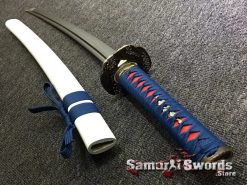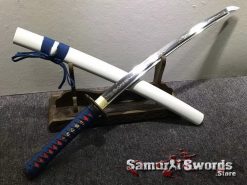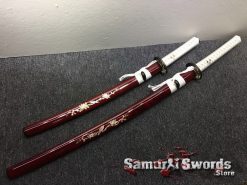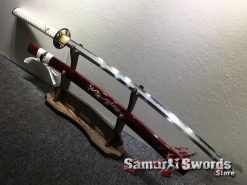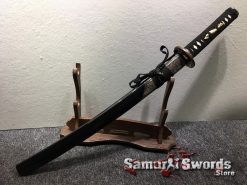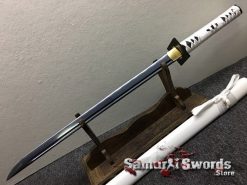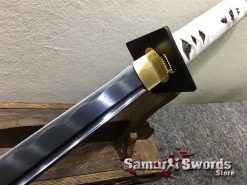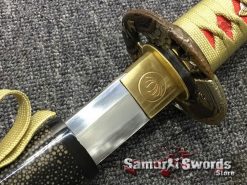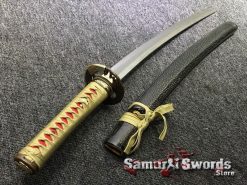Create Your Custom Samurai Sword
What is O-Wakizashi and Ko-Wakizashi?
The Ko-Wakizashi and O-Wakizashi are the smaller and longer versions of the Wakizashi. The O-Wakizashi was the longer Nihonto, while the Ko-Wakizashi was shorter.
The Ko-Wakizashi featured a blade measuring between 1 shaku (30.3 centimeters) and 1 Shaku 5 Sun, which equates to 45.54 centimeters. The Chonin class or commoners of feudal Japan were able to wear swords of this length.
Because of the sword ban after the period of Warring States in ancient Japan, the Wakizashi had to be shorter. Merchants, artisans, and commoners were prohibited from using the Katana, so they wore the Wakizashi instead.
This is the reason why the Wakizashi is more common than the Katana, despite the latter being more significant in Japan’s society.
The blade length of the O-Wakizashi, on the other hand, ranges between 1 Shaku 8 Sun and 1 Shaku 9 Sun 9 Bu (60.297 centimeters). Its size was similar to the Katana.
Generally, the Ko-Wakizashi and O-Wakizashi only differ by size. These are two different types of Wakizashi, but both are auxiliary swords. The Samurai used these together with their primary sword.
Like the Wakizashi, the Ko-Wakizashi and the O-Wakizashi feature slightly curved blades. These Nihonto have ornate Tsuba with traditional motifs.
Despite being auxiliary swords, the Ko-Wakizashi and O-Wakizashi were irreplaceable for the Samurai. They always brought this with them even when entering another house or building.
Even when going to bed, the Samurai would have their Wakizashi next to them. This sword was necessary for self-defense, and it had more uses, making it an essential weapon for the Samurai.
The Samurai carried the O-Wakizashi and the Ko-Wakizashi like how they would with the standard Wakizashi. They wore this along the thigh and used it with one hand.
In combat, some swordsmen utilized the Katana together with their auxiliary weapon. Since the Ko-Wakizashi and O-Wakizashi were lighter than the Katana, these were easier to maneuver.
What are the Characteristics of a Good Quality Wakizashi?
A good quality Wakizashi features a full-tang blade made of high carbon steel. Full tang blades are more durable since the blade and hilt of the sword is made of a single piece of metal. High-carbon steel makes the Wakizashi blade harder and more suitable for cutting practice.
A functional Wakizashi is always made from high-carbon steel. Majority of cheap swords feature stainless steel blades, which are too brittle for cutting targets. High carbon steel comes in different types.
1060 carbon steel consists of 0.60% carbon and is typical for entry-level swords. If a Wakizashi has a 1060 carbon steel blade, it can cut soft to medium objects.
Another type is 1095 carbon steel, which is harder than 1060 carbon steel due to its 0.95% carbon content.
Flexible Wakizashi blades are made of 9260 spring steel. This material allows the blade to withstand bends and twists. Also, it can revert to its original shape.
The best type of steel for a functional Wakizashi is T10 steel. Known for its toughness and durability, this material is the top choice among enthusiasts. T10 steel Wakizashi is excellent for advanced Tameshigiri.
T10 steel consists of 1% carbon and has an HRC hardness of 62. Its 0.35% silicon content makes the blade flexible, and it also has Tungsten to make this highly resistant against scratches.
A good quality Wakizashi is also clay tempered. When a blade undergoes differential hardening, it retains its razor-sharp edge while the spine remains soft to make it flexible. With that, the blade will bend without breaking.
Most practitioners believe that differential hardening is the key to make a blade suitable for extensive Tameshigiri. A clay tempered Wakizashi should survive at least 10,000 cuts of Tatami Omote, which is around ten years of heavy use. It will only need minor sharpening after every six months of extensive use.



